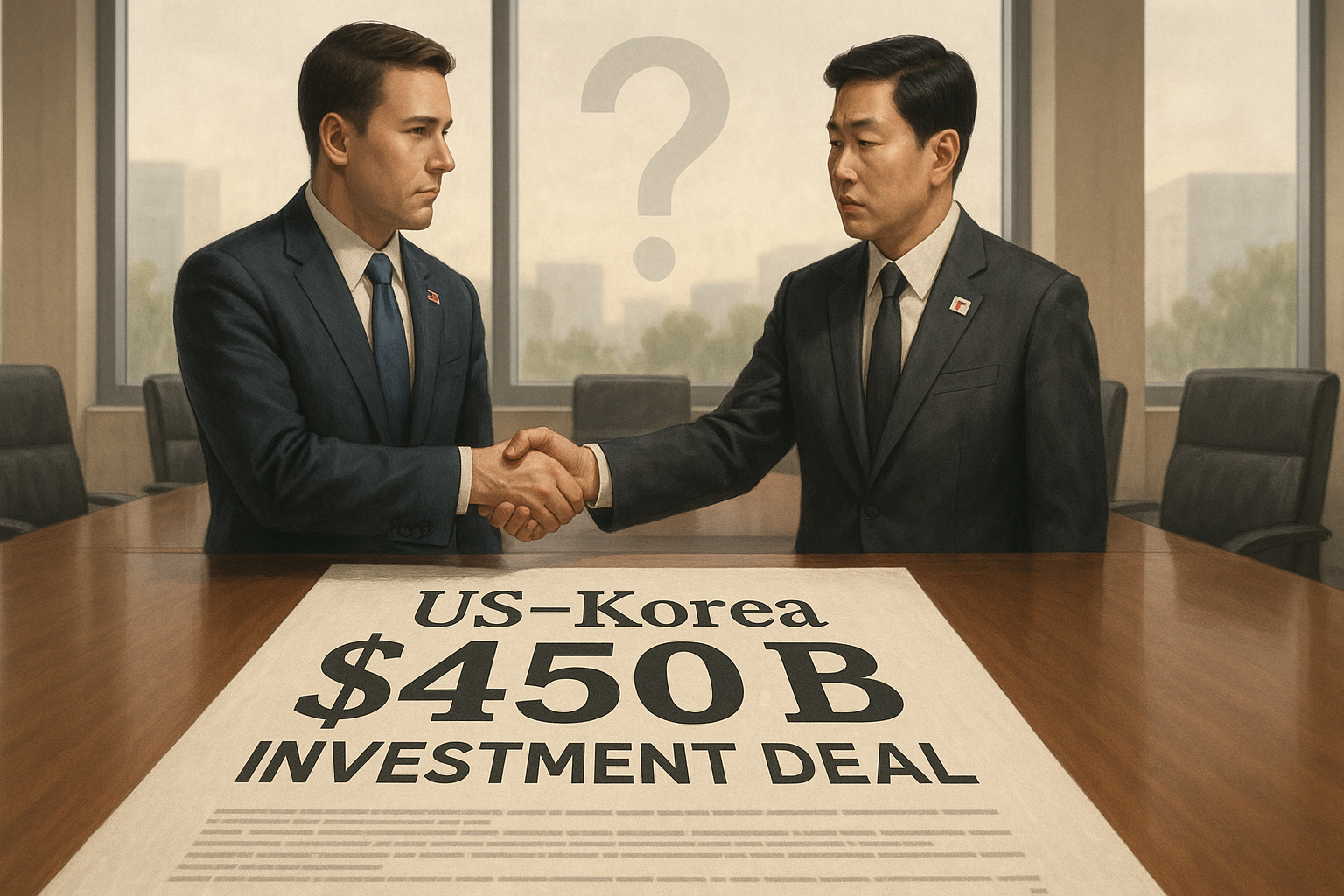Donald Trump has announced a whopper of an economic deal with South Korea — $450 billion in investment flowing to American shores. It's the kind of number that makes headlines, drops jaws, and raises eyebrows all at once.
Look, I've covered economic announcements for years, and there's something about election season that makes zeros multiply faster than rabbits in springtime. The deal, according to Trump's Truth Social post, includes $350 billion in direct investments, another $100 billion in energy arrangements, and a 15% tariff setup.
Is it real? Well, that's where things get interesting.
The timing certainly raises questions. Election years have this peculiar gravitational effect on investment announcements — pulling them into orbit around candidates like moths to a flame. I call it the "announcement premium" — that magical space between what gets proclaimed and what actually materializes.
Remember Foxconn? That $10 billion Wisconsin investment Trump trumpeted back in 2017? The one promising 13,000 jobs? Last I checked (and I did check, repeatedly, for a feature piece last year), the actual investment landed somewhere around $700 million with just a few hundred jobs. Just a 93% shortfall. No biggie.
What makes this Korea announcement particularly eyebrow-raising is its sheer magnitude. We're talking about $450 billion — roughly 22% of South Korea's entire annual GDP. That's not just big, it's massive. Gargantuan. Like trying-to-fit-an-elephant-through-a-keyhole massive.
The deal has other interesting components, particularly that 15% tariff arrangement. Trump has consistently framed tariffs as payments other nations make to America, which... isn't how tariffs work. At all.
Tariffs are taxes paid by American importers, which typically get passed on to American consumers. It's essentially taking money from your right pocket, moving it to your left pocket, and declaring yourself suddenly wealthier. Magic!
I've developed a little mental model for assessing these kinds of announcements. I call it the "reality discount rate" — a formula that considers:
- How close are we to Election Day? (Closer = bigger discount)
- How specific are the details? (Vaguer = bigger discount)
- Is there independent verification? (None = bigger discount)
- When's it actually happening? (Further out = bigger discount)
By this model? Well... let's just say I wouldn't bet my mortgage on seeing the full $450 billion materialize.
What's fascinating (in that political-junkie kind of way) is how these massive economic deals arrive with the predictability of seasonal allergies during election years. It's almost as if—and I'm just throwing this out there—politicians understand that voters respond to big numbers regardless of their plausibility.
The energy component ($100 billion) actually makes some sense given South Korea's position as a major energy importer and America's growing role as an energy exporter. There's legitimate potential there, though the scale and timeline still deserve a healthy dose of skepticism.
One thing worth noting: even if the full amount never materializes, having South Korea publicly commit to any significant investment represents a diplomatic win. International relations function like an elaborate signaling game, where sometimes the announcement itself carries value independent of execution.
(The markets, for what it's worth, barely shrugged at this news. That "market yawn factor" often separates substantive economic developments from political theater.)
I'd love to see the detailed terms of this agreement — if such details exist. Campaign-trail economic announcements tend to be about as specific as a weather forecast for next September.
Whether this deal ultimately produces $450 billion or something substantially less, it highlights the persistent gap between political economic narratives and economic reality. The economy, stubbornly, refuses to follow campaign scripts.
And y'know what? That's probably for the best.




